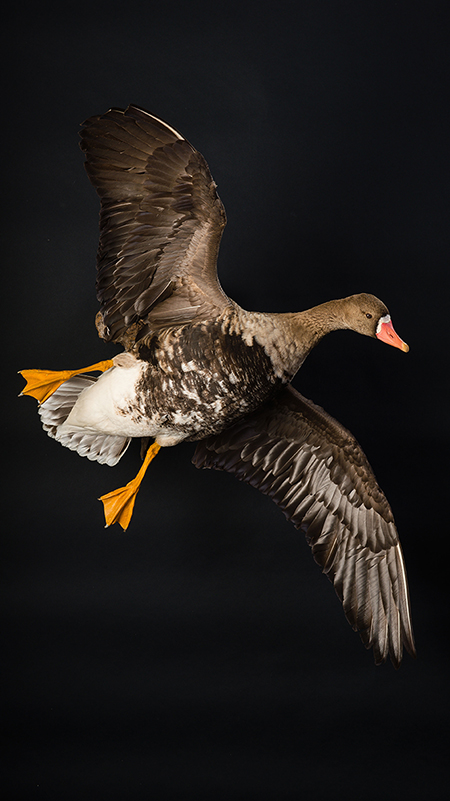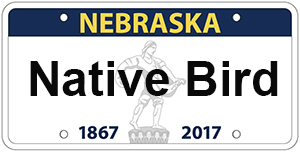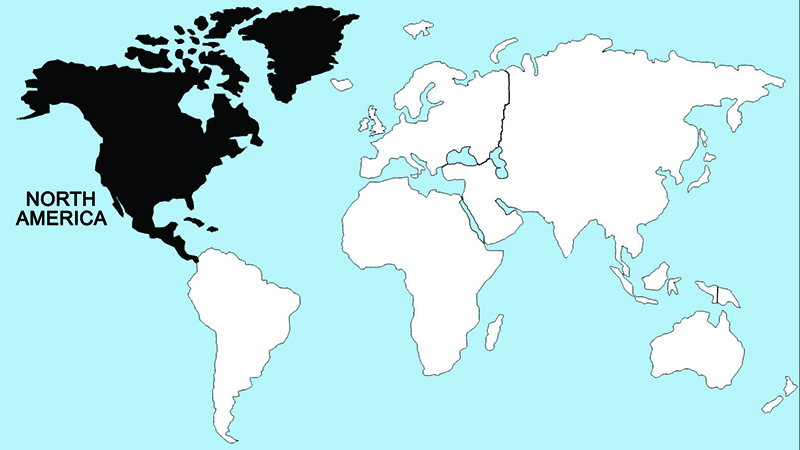Greater White-fronted Goose

Greater white-fronted geese often mix with Canada geese while on migration and in wintering areas, and frequently feed in the same fields with them. They apparently have much the same pattern of pair-bonding and family bonding, and young birds tend to remain with their parents even through the breeding season. It has been reported that much of the territorial defense against humans and mammalian predators is undertaken by yearling non-breeders, which intercept intruders and attempt to lure them away from nest sites.
As in other geese, pair bonds are permanent and potentially lifelong. Upon returning to their arctic breeding areas, flocks of white-fronted geese begin to break up and to disperse widely over the tundra. Individual females often choose low hills for nesting sites, and even in low tundra vegetation the incubating birds may be very hard to locate. The clutch size averages about five eggs, with considerable yearly variations associated with varying environmental conditions. Only the female incubates, while the male remains close at hand to help guard the nest. Incubation requires 23–25 days, and as soon as hatching is completed the male rejoins the family and the group moves to inland ponds, especially those providing heavy escape cover. The young birds fledge in a surprisingly short time, about 45 days, during which period the adults also undergo their own flightless period of about a month. The adults are thus able to fly about the same time as or shortly after the young have fledged, and leave the breeding areas soon afterwards.
Regions Birds Are Found


Collection Location & Year
Canada - Saskatchewan 1999
Taxonomy
| Order | Anseriformes |
|---|---|
| Family | Anatidae |
| Tribe | Anserini |
| Species | Anser |
| Genus | albifrons |
Gender
Male
References
- Johnsgard, P. A. 1975b. Waterfowl of North America. Bloomington, IN: Indiana Univ. Press.
- Johnsgard, P. A. 1978. Ducks, Geese and Swans of the World. Lincoln, NE: Univ. of Nebraska Press.
- Elliot, A., J. del Hoyo, J. Sargatal, and C. Imboden, eds. 1992. Handbook of Birds of the World. Vol. 1 (Ostriches to Ducks). Barcelona, Spain: Lynx Editions.
- Kear, J. 2005. Ducks, Geese and Swans. London, UK: Oxford University Press.